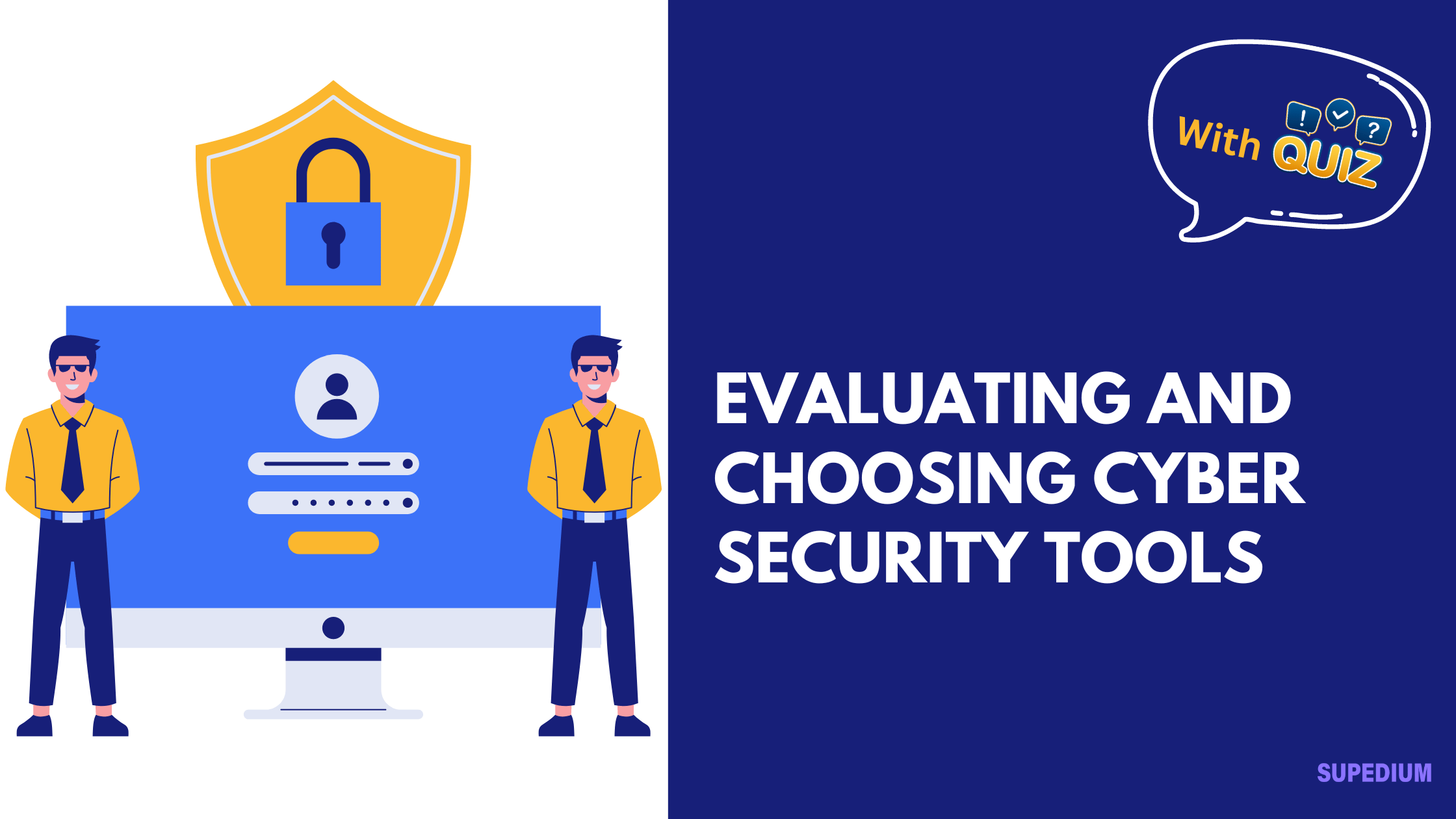Table of Contents
- 1 I. Introduction
- 2 II. Understanding Cyber Security Needs
- 3 III. Types of Cyber Security Tools
- 4 IV. Evaluation Criteria for Cyber Security Tools
- 5 V. Researching and Shortlisting Tools
- 6 VI. Testing and Validation
- 7 VII. Making the Final Decision
- 8 VIII. Implementation and Training
- 9 IX. Monitoring and Review
- 10 X. Conclusion
- 11 Quiz Time
![]()
I. Introduction
In today’s digital landscape, cyber security has become a paramount concern for organizations of all sizes. With the increasing frequency and sophistication of cyber threats, businesses face significant financial and reputational risks. The selection of appropriate cyber security tools is critical for protecting sensitive data and ensuring operational continuity. This article aims to guide organizations in evaluating and choosing the right cyber security tools through a structured approach.
II. Understanding Cyber Security Needs
A. Identifying Organizational Assets
Before selecting any tools, it’s essential to understand what assets need protection. Organizations should start by cataloging their data types, focusing on the sensitivity and importance of each category. This includes personal data, intellectual property, and proprietary systems.
B. Assessing Vulnerabilities
Conducting a comprehensive risk assessment is crucial. Organizations should identify potential threats and vulnerabilities within their systems. This assessment helps prioritize the areas that need immediate attention and informs the selection of relevant tools.
C. Defining Security Goals
Defining clear security goals is vital for choosing the right tools. Compliance requirements, such as GDPR or HIPAA, must be considered. Additionally, organizations should outline objectives related to business continuity and disaster recovery, ensuring that the chosen tools align with these goals.
III. Types of Cyber Security Tools
A. Categories of Tools
There is a diverse range of cyber security tools available, each designed to address specific needs:
- Firewalls: Act as a barrier between trusted and untrusted networks, controlling incoming and outgoing traffic.
- Intrusion Detection and Prevention Systems (IDPS): Monitor network traffic for suspicious activities and take action against potential threats.
- Antivirus and Anti-malware Solutions: Protect against viruses, malware, and other malicious software.
- Security Information and Event Management (SIEM): Aggregate and analyze security data from across the organization for real-time threat detection.
- Identity and Access Management (IAM): Ensure that only authorized users can access specific data and systems.
- Data Loss Prevention (DLP): Monitor and protect sensitive data from unauthorized access and data breaches.
- Encryption Tools: Secure data in transit and at rest, making it unreadable to unauthorized users.
- Vulnerability Management Tools: Identify and prioritize vulnerabilities within systems for timely remediation.
B. Tool Features and Functions
When assessing tools, organizations should consider features such as real-time monitoring, detailed reporting and analytics, automated responses to incidents, and integration capabilities with existing systems.
IV. Evaluation Criteria for Cyber Security Tools
A. Security Efficacy
The primary purpose of cyber security tools is to effectively detect and respond to threats. Organizations should evaluate tools based on detection rates, false positive occurrences, and the ability to respond to incidents promptly.
B. Usability
User experience plays a crucial role in the effectiveness of security tools. A user-friendly interface reduces the learning curve for staff and increases the likelihood of effective use.
C. Compatibility and Integration
Evaluating how well a tool integrates with existing infrastructure is essential. Compatibility with third-party tools and systems can enhance overall security effectiveness.
D. Scalability
As organizations grow, their security needs will evolve. It’s important to choose tools that can scale to accommodate increasing demands, whether in terms of user volume or geographic expansion.
E. Vendor Reputation and Support
A vendor’s reputation can significantly influence the effectiveness of a security tool. Organizations should seek tools from reputable vendors, checking industry reviews and certifications. Additionally, robust customer support and clear service level agreements (SLAs) are vital.
F. Cost
Cost considerations include not just the initial purchase price but also the total cost of ownership (TCO), which encompasses ongoing maintenance, updates, and training.
V. Researching and Shortlisting Tools
A. Gathering Information
Research is critical in the tool selection process. Organizations should leverage online reviews, case studies, and vendor demonstrations to gather insights.
B. Creating a Shortlist
Involving key stakeholders—such as IT, legal, and compliance teams—in the shortlisting process ensures that various perspectives are considered. Potential tools should be evaluated against the established criteria.
VI. Testing and Validation
A. Conducting Proof of Concept (PoC)
A proof of concept allows organizations to test tools in a controlled environment. This helps assess performance and gather user feedback before making a final decision.
B. Real-world Simulation
Running simulations or tabletop exercises can provide insights into how well tools perform under pressure, enabling organizations to evaluate their effectiveness in real-world scenarios.
VII. Making the Final Decision
A. Comparing Shortlisted Tools
After testing, organizations should compare shortlisted tools based on a scoring system derived from the evaluation criteria. Achieving consensus among stakeholders will facilitate a well-rounded decision.
B. Negotiating with Vendors
Once a preferred tool is identified, organizations should engage in negotiations with vendors regarding pricing, terms, and conditions to secure the best deal.
VIII. Implementation and Training
A. Developing an Implementation Plan
A clear implementation plan should outline timelines, milestones, and resource allocation, ensuring a smooth rollout of the chosen tools.
B. Staff Training and Awareness
Training sessions and educational materials are essential for empowering staff to use the tools effectively. Ongoing education on emerging cyber threats is also crucial.
IX. Monitoring and Review
A. Continuous Evaluation
Post-implementation, organizations should continuously monitor the effectiveness of their cyber security tools. Regular feedback from users can help identify areas for improvement.
B. Adjusting Strategy
Cyber threats are constantly evolving, so organizations must be prepared to update their security tools and strategies accordingly. Periodic reviews of the evaluation process will help maintain relevance.
X. Conclusion
Choosing the right cyber security tools is a complex yet vital process that directly impacts an organization’s ability to protect itself from cyber threats. By following a structured evaluation process, organizations can make informed decisions that align with their unique needs and risk profiles. Ongoing vigilance and adaptation will ensure that cyber security remains robust in the face of evolving threats.






Be the first to comment